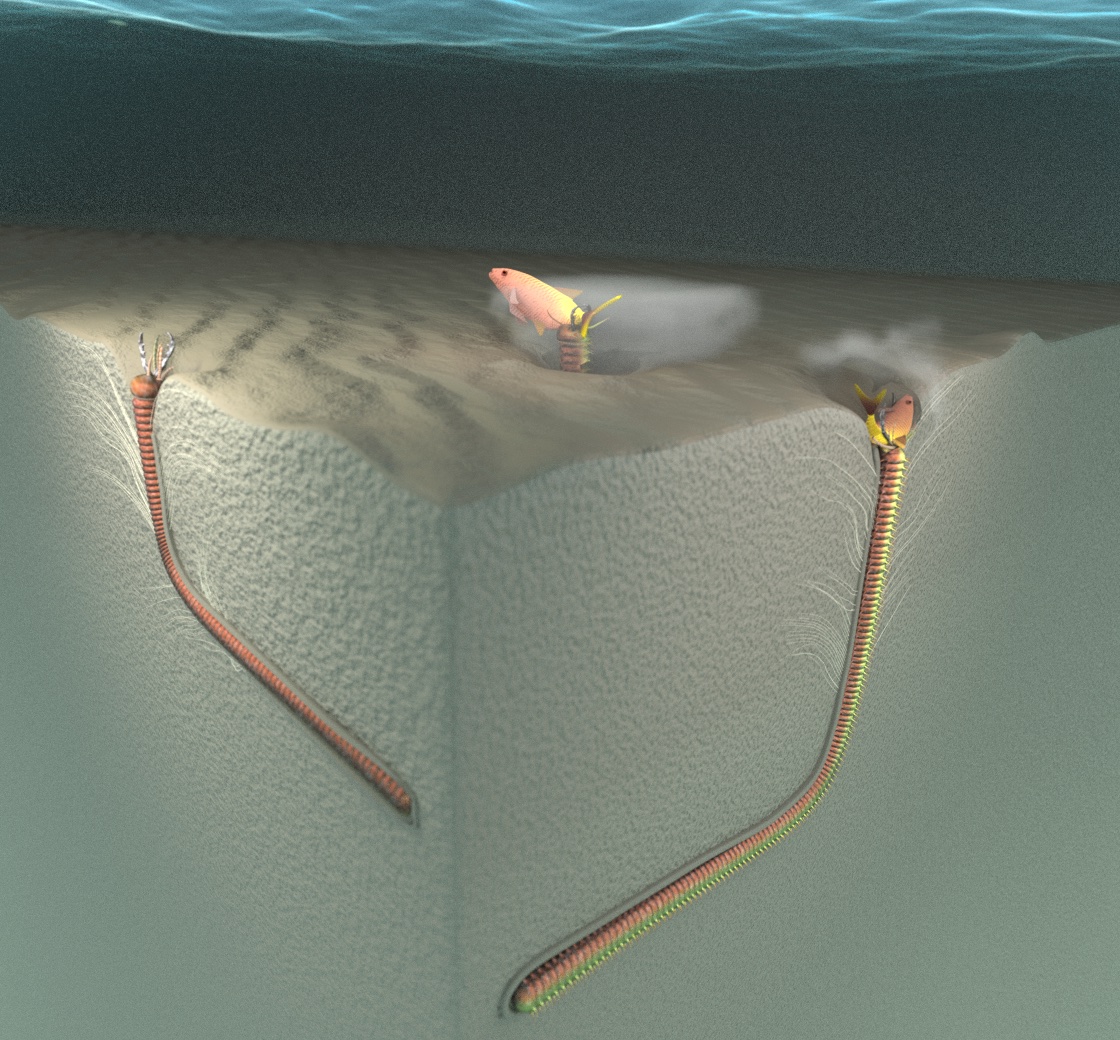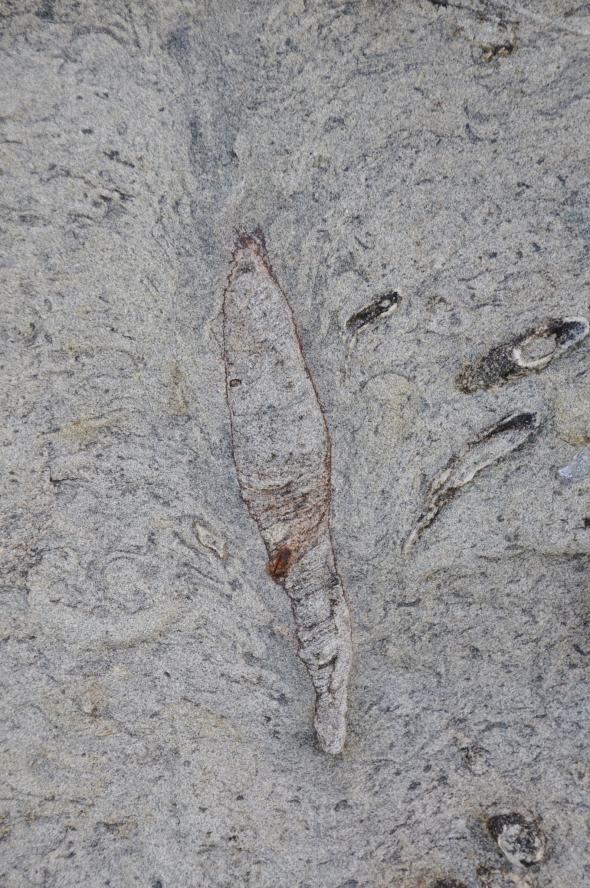Prof. Löwemark and former student Pan Yu-Yen’s study on the fossilized burrows of giant ambush-predatory worms found at Yehliu Geopark has been published in Scientific Reports
文章參見:https://www.nature.com/articles/s41598-020-79311-0
新聞稿與相片下載連結:
https://gizmodo.com/researchers-say-theyve-found-the-ancient-dens-of-giant-1846099925

Schematic three-dimensional model of the feeding behavior of Bobbit worms and the proposed formation of Pennichnus formosae. (a) Bobbit worm sits inside the L-shaped burrow waiting for prey and (b) uses its strong jaws to catch the prey (e.g., fish) passing by the burrow opening (see video at https://www.mmoraa.com/video). (c) As the struggling prey is pulled into the burrow, the sediment collapses around the aperture to form feather-like collapse structures surrounding the upper burrow. Between the burrow and feather-like collapse structures is a disturbed zone caused by the repeated feeding action of the worm and burrow re-establishment that results in an accumulation of mucus lining over time. Scale bar = 30 cm.

The top of this fossilized burrow found in Taiwan forms a feather-shaped collapse structure, similar to the structures of modern sand striker burrows.
